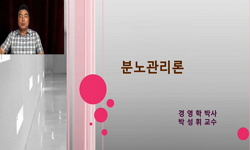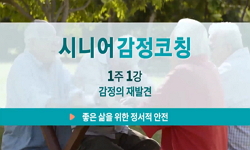W. B. Yeats poetic purpose is to advocate to Sophia who is suffering in the world with mankind as a hidden God and the feminine principle in Christian Gnostic myth. He searched for two of Sophia’s aspects: Mother and Daughter Sophia. Yeats believed ...
http://chineseinput.net/에서 pinyin(병음)방식으로 중국어를 변환할 수 있습니다.
변환된 중국어를 복사하여 사용하시면 됩니다.
- 中文 을 입력하시려면 zhongwen을 입력하시고 space를누르시면됩니다.
- 北京 을 입력하시려면 beijing을 입력하시고 space를 누르시면 됩니다.
https://www.riss.kr/link?id=A82610590
- 저자
- 발행기관
- 학술지명
- 권호사항
-
발행연도
2003
-
작성언어
Korean
-
주제어
예이츠 ; 남녀양성구유 ; 여성원리 ; 남성원리 ; 재림 ; 분노 ; 소피아 ; 존재의 통합 ; W. B. Yeats ; Androgyny ; The Feminine Principle ; The Masculine Principle ; The Second Coming ; Rage ; Sophia ; Unity of Being
-
KDC
840
-
등재정보
KCI등재
-
자료형태
학술저널
-
수록면
91-112(22쪽)
-
KCI 피인용횟수
0
- 제공처
-
0
상세조회 -
0
다운로드
부가정보
다국어 초록 (Multilingual Abstract)
W. B. Yeats poetic purpose is to advocate to Sophia who is suffering in the world with mankind as a hidden God and the feminine principle in Christian Gnostic myth. He searched for two of Sophia’s aspects: Mother and Daughter Sophia. Yeats believed that Mother Sophia abodes in heaven. On the other hand, Daughter Sophia is suffering in the world, and he thought himself as a chosen man of the sole priest for Daughter Sophia. Yeats tried to dedicate his life for Daughter Sophia from his early rose poetry. The immortal rose is a symbol of Helen of Troy or Countess Cathleen who sacrificed her life for rescuing her people’s souls. Yeats also waited for the time of the recovery of Sophia’s glory again. The decided time is coming to follow the theory of the Gyres in A Vision. After dominating the masculine gyre for 2000 years, the androcentric society will disappear by returning to the feminine gyre. Yeats thought the new age would be dominated by Sophia who was not only feminine but androgynous. Yeats also called the new age a ‘rosy peace’ which is a symbol of ’Unity of Being’ and the immortal world. Yeats was eager to search for achieving ‘Unity of Being’ by uniting with Sophia. As he got older, he was a passionate old man who still indulged in Sophia. Yeats believed in Sophia as a hidden and defeated god. But when decided time comes, Sophia will be recovered her glory. In “The second coming,” Sophia as an androgynous god, is symbolized by the sphinx. Yeats often used to the sphinx image to explain Sophia. Especially, the sphinx is identified with the Judge of the Last Judgement. It is important to the symbol of Sphinx’s eyes; ‘a blank and pitiless as the sun.’ The sun symbolizes God’s fury of the Last Judgement as well as the unchangeable supernatural world. Sphinx’s eyes of the sun image are compared with the cat’s eyes of the moon. The moon is a symbol of the wheel of reincarnation and mortal world. In A Vision, the moon has 28 aspects as a symbol of the wheel of reincarnation. Sophia has controlled the souls after death by following the rules of the moon’s 28 aspects. Yeats symbolized Sophia as the Judge of all souls by portraying her as a ‘cook.’ On the contrary, when the sphinx comes, there will be no more the moon’s changeable aspects in the world. Therefore, although the sphinx looks like an evil image, it is only a symbol of Sophia. Yeats always wanted to be Sophia’s sole priest. So he was a Christian Gnostic priest just as W. Blake. In fact, he identified with Ribh who was his poetic hero as well as the Christian Gnostic priest. God’s fury and the rough sphinx image are paradoxical symbols of the God’s glory and the age of the rosy peace. The sphinx’s ‘pitiless eye’ is connected with the horseman’s ‘cold eye’ on his epitaph. The ‘cold eye’ is symbolized to achieve Yeats’s final poetic purpose, ‘Unity of Being.’ That is, the symbol suggested that Yeats would be a Daimon after his death.
동일학술지(권/호) 다른 논문
-
- 한국예이츠학회
- 구자광
- 2003
- KCI등재
-
- 한국예이츠학회
- 조용해
- 2003
- KCI등재
-
On the Poetry of William Butler Yeats : His Poetical Attitude and Philosophy
- 한국예이츠학회
- 윤종혁
- 2003
- KCI등재
-
Yeats’s Spiritual Aestheticism: Interaction of Stability and Mutability
- 한국예이츠학회
- 이한묵
- 2003
- KCI등재
분석정보
인용정보 인용지수 설명보기
학술지 이력
| 연월일 | 이력구분 | 이력상세 | 등재구분 |
|---|---|---|---|
| 2028 | 평가예정 | 재인증평가 신청대상 (재인증) | |
| 2022-01-01 | 평가 | 등재학술지 유지 (재인증) |  |
| 2019-01-01 | 평가 | 등재학술지 유지 (계속평가) |  |
| 2016-01-01 | 평가 | 등재학술지 선정 (계속평가) |  |
| 2015-12-01 | 평가 | 등재후보로 하락 (기타) |  |
| 2011-01-01 | 평가 | 등재학술지 유지 (등재유지) |  |
| 2009-01-01 | 평가 | 등재학술지 유지 (등재유지) |  |
| 2006-01-01 | 평가 | 등재학술지 선정 (등재후보2차) |  |
| 2005-01-01 | 평가 | 등재후보 1차 PASS (등재후보1차) |  |
| 2003-01-01 | 평가 | 등재후보학술지 선정 (신규평가) |  |
학술지 인용정보
| 기준연도 | WOS-KCI 통합IF(2년) | KCIF(2년) | KCIF(3년) |
|---|---|---|---|
| 2016 | 0.27 | 0.27 | 0.28 |
| KCIF(4년) | KCIF(5년) | 중심성지수(3년) | 즉시성지수 |
| 0.27 | 0.26 | 0.229 | 0.08 |




 코리아스칼라
코리아스칼라





